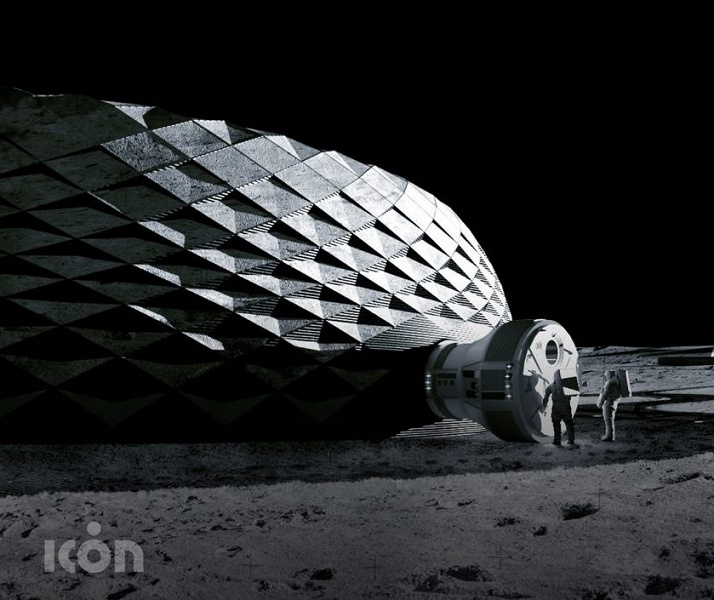NASA and ICON are working on the Olympus project – 3D printing for building infrastructure on the Moon
As part of the Artemis mission, NASA, in collaboration with the American company ICON, specializing in 3D printing of buildings, plans to launch 3D printing of habitable modules on the Moon by 2040.
The collaboration between NASA and ICON has already resulted in ICON receiving $30 million in funding from NASA in 2020 and an additional $57.2 million in 2022 to support Project Olympus. Project Olympus is the development of a 3D printer capable of printing buildings from concrete made from rocks, mineral particles, and regoliths available on the lunar surface.
The joint project between NASA and ICON aims to create housing suitable not only for NASA astronauts but also for ordinary citizens, with the long-term goal of creating a permanent human colony on the Moon and eventually Mars. As part of the project, Olympus ICON is also collaborating with architectural firms including Bjarke Ingels Groups and SEArch+ (Space Exploration Architecture).

Currently, plans for the project are presented primarily in the form of digital renderings, but the NASA and ICON team plans to begin extensive testing soon to develop a 3D printer that can operate in the harsh conditions of the lunar environment. This space-based 3D printer, called Olympus, will be controlled from Earth.
In this project, weight is a key factor – each additional kilogram of weight on the rocket costs approximately $1,000,000. High radiation and low gravitational field also pose significant problems.
NASA and ICON plan to use 3D printing to create architecture on the Moon for future settlements
The Huntsville-based Marshall Space Flight Center has more than a dozen test chambers that can simulate radiation and vacuum conditions outside Earth. The ICON 3D printer is scheduled to be tested in the largest of these chambers in February 2024.
NASA scientists are also developing a lunar concrete simulant material that could replicate the lunar dust-based material during tests on Earth. They report that they are testing concrete spheres made from simulated regolith. This material is resistant to temperatures up to 1870 °C.
In addition to constructing buildings, NASA is also working with universities and private companies to create furniture and interior prototypes created on the Moon. For example, NASA is collaborating with Stanford University researchers who are separating minerals in artificial lunar soil to create tiles that can be used in kitchens or bathrooms.

Following the successful lunar flyby of the Artemis I mission in 2022, the Artemis II mission is planned to send four crew members into lunar orbit in November 2024. Then, in 2025, the Artemis III mission is planned, which will put humans on the Moon for the first time since 1972. Two more crewed missions are planned before the end of the decade, and 3D printing of structures on the lunar surface is expected in 2040.
The Olympus project is not the only initiative with the approach of using local resources for production and construction on the surface of the Moon. Last year, design agency AI SpaceFactory unveiled a design for the LINA lunar station, created using 3D printing and developed for NASA. LINA’s design and testing are part of NASA’s REACT project to advance technologies and materials created through the 3D Printed Habitat Challenge.
AI SpaceFactory modified its original polymer, which was created from simulated regolith, to use real lunar regolith. This material was tested in NASA vacuum chambers, providing new data for the development of sustainable 3D printers capable of creating large-scale structures.
The University of New South Wales is collaborating with Australian design startup Luyten to accelerate the research and development of a 3D printer capable of printing from lunar materials. Through Project Meeka, these organizations have teamed up to accelerate the development and testing of a framed 3D printer for lunar regolith called Platypus Galacticas. This system is designed for the rapid construction of lunar infrastructure with dimensions of up to 9 × 12 meters.




